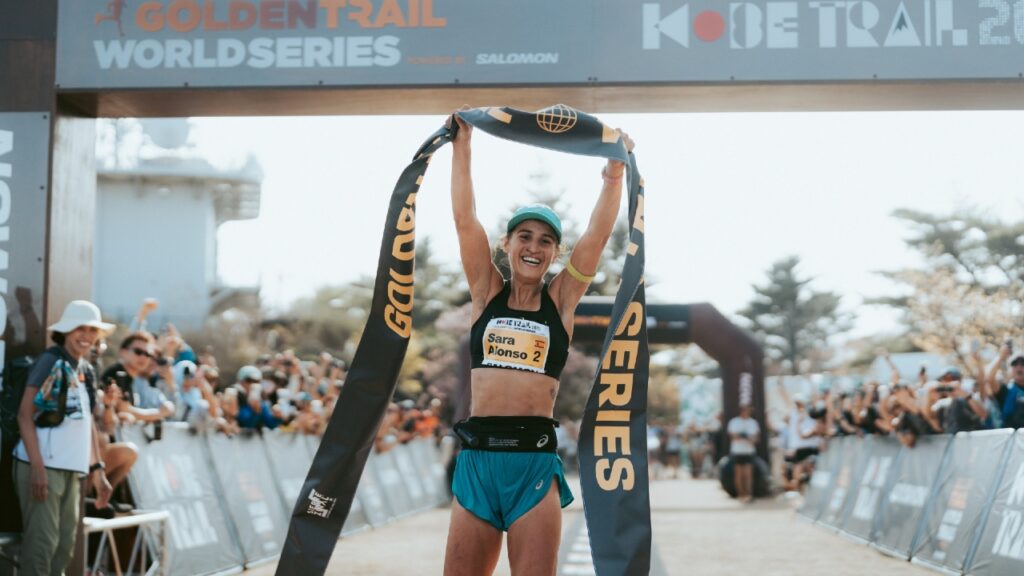In the world of mountain running, strategy, skill, and adaptability are essential for success, as saw in the inaugural event of the 2025 Golden Trail World Series held in Kobe, Japan. The race unfolded on the rugged trails surrounding Mount Maya, marked by steep descents, technical stone-paved trails, and a challenging elevation profile that tested the athletes both physically and mentally. The event, completed under intense heat and high humidity, underscored the importance of not only fitness but also the ability to navigate environmental challenges effectively—critical aspects for athletes preparing for high-stakes competitions.
The women’s race witnessed Spanish athlete Sara Alonso, representing Asics, claim a hard-fought victory. Her win came after a notable tactical shift during the race. Initially, Joyce Muthoni Njeru from Kenya set a brisk pace, leading a group that included Madalina Florea and local competitor Takako Takamura. However, by the first aid station, Alonso had strategically moved to the front, showcasing her ability to adapt quickly to the dynamic of the race. As competitors battled fatigue and humidity, she executed a decisive surge that maximized her advantage, leading her to finish in 2:53:57. This strategy of knowing when to push the pace—while also remaining alert to the actions of competitors—reflects an essential approach for ultrarunners. Maintaining focus on both personal performance and the competitive landscape can prove pivotal for success.
Florea and Osa, holding to their strategies of pace management and tactical positioning, finished in 2:59:46 and 3:02:10, respectively, indicating that pacing strategy remains a fundamental consideration in trail racing. Florea’s steadiness, despite the escalating challenges, exemplifies the type of resilience required in longer endurance events. As athletes advance through courses with severe climate conditions and terrain intricacies, the ability to maintain position while managing physical effort becomes crucial.
The men’s race highlighted a similar narrative. Defending champion Patrick Kipngeno from Kenya demonstrated a powerful understanding of pacing and race dynamics. Beginning at a measured pace behind early leader Joey Hadorn, Kipngeno utilized the second loop to mount a significant uphill surge, reclaiming the lead with confidence. This tactical decision is indispensable for ultrarunners: knowing specifically when to capitalize on advantageous segments of a race can separate the podium finishers from those who falter in the later stages. As the race intensified, Kipngeno’s calculated moves led him to a finish time of 2:29:46, successfully defending his title against formidable close competitors who kept the pressure throughout the race. His insights post-race emphasized the importance of both mental and physical preparation—factors that experienced athletes recognize as critical to replicating high-performance consistency.
Observing the strategies employed by both winners offers essential lessons for those training for mountain ultras. Wind resistance, technical hiking sections, and the psychological effects of prolonged competition can often derail even the most prepared athlete. Effective training must consider these variables, incorporating tactical race simulations that reflect real-world race conditions. During training, ultrarunners should implement heat acclimatization strategies, simulate technical terrain challenges, and practice nutrition and hydration plans tailored to withstand physical fatigue and potential environmental factors encountered during competition.
As the 2025 Golden Trail World Series unfolds, the emphasis on strategic race preparation and adaptability becomes clearer. With increased competition and evolving race dynamics, athletes are encouraged to prioritize adaptive training methodologies, constantly refining their approaches to pacing, recovery, and race-day decision-making.
In a sport where conditions and competitors can shift rapidly, the critical takeaway for ultrarunners lies in the ability to remain flexible and responsive during races. Those who can effectively adjust their strategies in real time based on race conditions will find themselves equipped for success in the demanding landscape of mountain ultras. Consistent training with adaptability at its core, alongside comprehensive race strategy practice, creates a robust foundation for performance when it counts the most.
